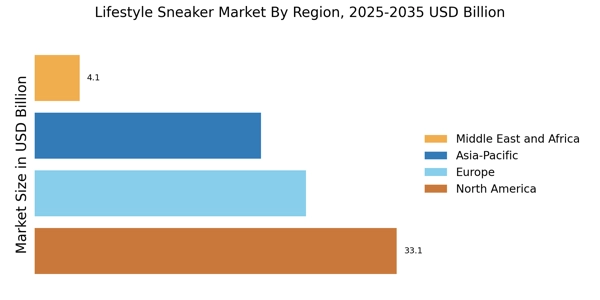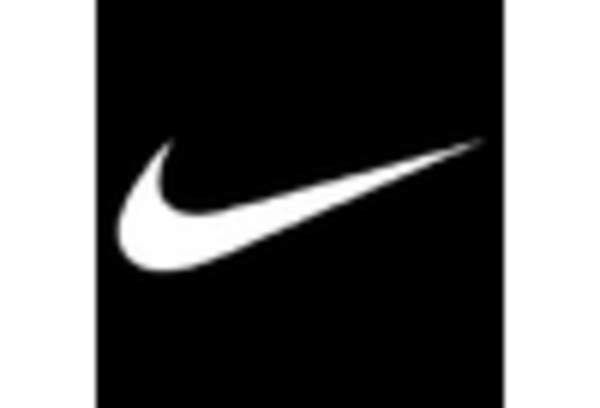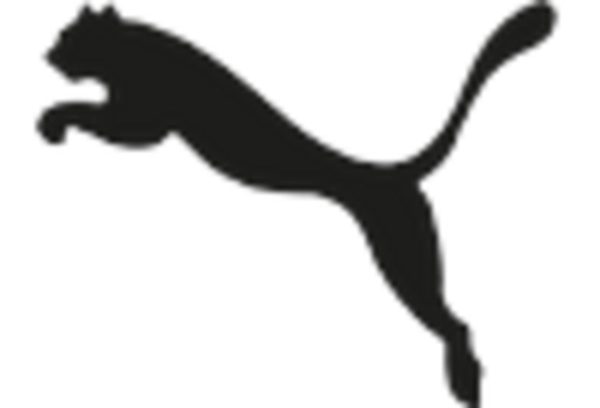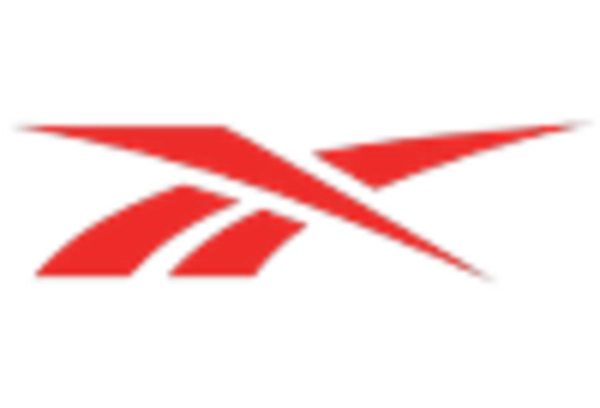The Lifestyle Sneaker Market is currently characterized by a dynamic competitive landscape, driven by innovation, sustainability, and digital transformation. Major players such as Nike (US), Adidas (DE), and Puma (DE) are at the forefront, each adopting distinct strategies to enhance their market positioning. Nike (US) continues to emphasize its commitment to sustainability, integrating eco-friendly materials into its product lines, while Adidas (DE) focuses on expanding its digital footprint through enhanced e-commerce capabilities. Puma (DE) is leveraging collaborations with high-profile designers and celebrities to attract younger consumers, thereby reshaping its brand image. Collectively, these strategies not only intensify competition but also push the entire market towards a more sustainable and digitally integrated future.
In terms of business tactics, companies are increasingly localizing manufacturing to mitigate supply chain disruptions and reduce carbon footprints. This approach appears to be a response to the growing consumer demand for transparency and sustainability. The market structure is moderately fragmented, with several key players holding substantial market shares, yet numerous smaller brands are emerging, driven by niche marketing and unique product offerings. This fragmentation allows for diverse consumer preferences to be catered to, while the influence of major players remains significant in shaping market trends.
In September 2025, Nike (US) announced the launch of its "Move to Zero" initiative, which aims to achieve zero carbon and zero waste across its supply chain. This strategic move underscores Nike's commitment to sustainability and positions the brand as a leader in environmentally conscious practices. By prioritizing sustainable production methods, Nike not only enhances its brand reputation but also aligns with the increasing consumer preference for eco-friendly products, potentially driving sales growth in the long term.
In August 2025, Adidas (DE) unveiled its new digital platform, which integrates augmented reality features to enhance the online shopping experience. This initiative reflects Adidas's focus on digital transformation, aiming to create a more engaging and personalized shopping journey for consumers. By leveraging technology, Adidas seeks to differentiate itself in a crowded market, potentially increasing customer loyalty and driving higher conversion rates.
In July 2025, Puma (DE) entered into a strategic partnership with a leading tech firm to develop smart sneakers equipped with fitness tracking capabilities. This collaboration highlights Puma's commitment to innovation and its aim to tap into the growing market for wearable technology. By integrating advanced features into its products, Puma not only enhances its product offerings but also positions itself to attract tech-savvy consumers, thereby expanding its market reach.
As of October 2025, the competitive trends in the Lifestyle Sneaker Market are increasingly defined by digitalization, sustainability, and the integration of artificial intelligence. Strategic alliances are becoming more prevalent, as companies seek to leverage each other's strengths to enhance product offerings and market reach. Looking ahead, it appears that competitive differentiation will increasingly pivot from price-based strategies to innovation, technological advancements, and supply chain reliability. This shift suggests that companies that prioritize these areas may be better positioned to thrive in an evolving market landscape.


















Leave a Comment